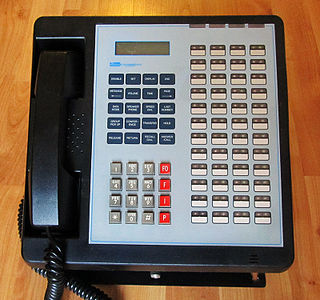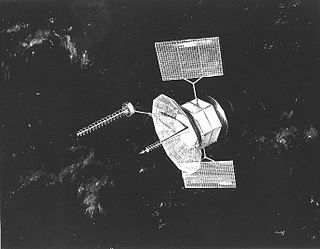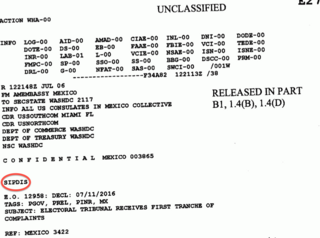 W
W1 Main Circuit (1MC) is the term for the shipboard public address circuits on United States Navy and United States Coast Guard vessels. This provides a means of transmitting general information and orders to all internal ship spaces and topside areas, and is loud enough that all embarked personnel are able to (normally) hear it. It is used to put out general information to the ship’s crew on a regular basis each day. The system consists of an amplifier-oscillator group which is located in the IC/gyro room, a microphone control station, portable microphones at each control station and loudspeakers located throughout the ship. Control stations for the 1MC announcing system are located at the pilot house, OOD stations on the quarterdecks, aft steering and Damage Control Central area.
 W
WThe Automatic Voice Network was a worldwide American military telephone system. The system was built starting in 1963, based on the Army's existing Switch Communications Automated Network (SCAN) system.
 W
WThe former Bad Aibling Station (BAS) has officially been designated as 18th United States Army Security Agency Field Station and a.k.a. Field station 81, or Hortensie III. Currently it is a satellite tracking station operated by the German SIGINT agency Bundesnachrichtendienst (BND) from nearby Mangfall Barracks in Bad Aibling, Bavaria.
 W
WThe Beijing–Washington hotline is a system that allows direct communication between the leaders of the United States and China. This hotline was established in November 2007, when China and the United States announced that they will set up a military hotline between Beijing and Washington D.C. to avoid misunderstanding during any moments of crisis in the Pacific.
 W
WThe Benson House, listed on the National Register of Historic Places as the Wading River Radio Station, is a three-story, red-shingled wood-frame home in Wading River, New York, situated on the North Shore of Long Island, on a 150-foot-high (46 m) bluff overlooking Long Island Sound. From 1942 until 1945 it housed an important World War II counterintelligence operation, designed to deceive Germany and Japan about Allied war plans.
 W
WThe G-506 trucks, 1 1⁄2-ton, 4x4, produced as the Chevrolet G7100 models, were a series of (light) medium four wheel drive trucks used by the United States Army and its allies during and after World War II. This series came in standard cargo, as well as many specialist type bodies.
 W
WThe Defense Red Switch Network (DRSN) is a dedicated telephone network which provides global secure communication services for the command and control structure of the United States Armed Forces. The network is maintained by the Defense Information Systems Agency (DISA) and is secured for communications up to the level of Top Secret SCI.
 W
WFLTSATCOM was a satellite communication system of the U.S. Navy which was used for UHF radio communications between ships, submarines, airplanes and ground stations of the Navy.
 W
WThe Mobile User Objective System is a narrowband military communications satellite system that supports a worldwide, multi-Service population of users in the ultra high frequency (UHF) band. The system provides increased communications capabilities to newer, smaller terminals while still supporting interoperability with legacy terminals. MUOS is designed to support users who require greater mobility, higher bit rates and improved operational availability. The MUOS was declared fully operational for use in 2019
 W
WThe Global Broadcast Service (GBS) is a one-way broadcast capability supporting timely delivery of unclassified and classified video, large quantities of unclassified or classified digital data and other theater information transfer need for the U.S. Department of Defense (DoD) and its deployed and garrisoned units worldwide. GBS has become a critical piece of the DoD's intelligence, surveillance and reconnaissance architecture. An advancement in satellite communications, GBS fills two key military communications requirements:High data rates to many users at once High data rates to very small, low-cost user receive-only terminals
 W
WThe Intelligence and Information Warfare Directorate is a component of the US Army Communications-Electronics RD&E Center, based out of Aberdeen Proving Ground. Consisting of five primary divisions, I2WD forms a Research and Development (R&D) enterprise.
 W
WThe Military Satellite Communications Directorate is a United States Space Force organization headquartered at Los Angeles Air Force Base, California. It is one of several wings and other units that make up the Space and Missile Systems Center (SMC).
 W
WThe Mobile Subscriber Equipment (MSE) system was a pioneering tactical telephony system for mobile users, somewhat akin to today's mobile telephony systems, created by General Dynamics for the United States Army. Acquisition began in 1982 for echelons below Corps and down to the battalion level, and the system was first fielded in February, 1988.
 W
WThe Moscow–Washington hotline was a system that allowed direct communication between the leaders of the United States and the USSR. This hotline was established in 1963 and links the Pentagon with the Kremlin. Although in popular culture it is known as the "red telephone", the hotline was never a telephone line, and no red phones were used. The first implementation used Teletype equipment, and shifted to fax machines in 1986. Since 2008, the Moscow–Washington hotline has been a secure computer link over which messages are exchanged by a secure form of email.
 W
WThe Secret Internet Protocol Router Network (SIPRNet) is "a system of interconnected computer networks used by the U.S. Department of Defense and the U.S. Department of State to transmit classified information by packet switching over the 'completely secure' environment". It also provides services such as hypertext document access and electronic mail. As such, SIPRNet is the DoD's classified version of the civilian Internet.
 W
WTACAMO is a United States military system of survivable communications links designed to be used in nuclear warfare to maintain communications between the decision-makers and the triad of strategic nuclear weapon delivery systems. Its primary mission is serving as a signals relay, where it receives orders from a command plane such as Operation Looking Glass, and verifies and retransmits their Emergency Action Messages (EAMs) to US strategic forces. As it is a dedicated communications post, it features the ability to communicate on virtually every radio frequency band from very low frequency (VLF) up through super high frequency (SHF) using a variety of modulations, encryptions and networks, minimizing the likelihood an emergency message will be jammed by the enemy. This airborne communications capability largely replaced the land-based extremely low frequency (ELF) broadcast sites which became vulnerable to nuclear strike.
 W
WThe Combat Capabilities Development Command (CCDC) C5ISR Center, formerly the Communications-Electronics RD&E Center (CERDEC), is the United States Army information technologies and integrated systems center. CCDC C5ISR Center is headquartered at Aberdeen Proving Ground in Maryland, with activities at Fort Belvoir in Virginia and Joint Base McGuire-Dix-Lakehurst in New Jersey.
 W
WThe White Alice Communications System was a United States Air Force telecommunication network with 80 radio stations constructed in Alaska during the Cold War. It used tropospheric scatter for over-the-horizon links and microwave relay for shorter line-of-sight links. Sites were characterized by large parabolic, tropospheric scatter antennas as well as smaller microwave dishes for point to point links.